Fannie Mae 2007 Annual Report Download - page 9
Download and view the complete annual report
Please find page 9 of the 2007 Fannie Mae annual report below. You can navigate through the pages in the report by either clicking on the pages listed below, or by using the keyword search tool below to find specific information within the annual report.-
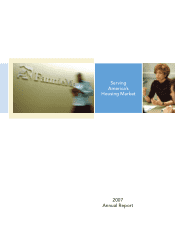 1
1 -
 2
2 -
 3
3 -
 4
4 -
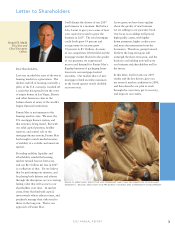 5
5 -
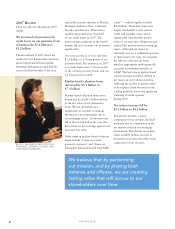 6
6 -
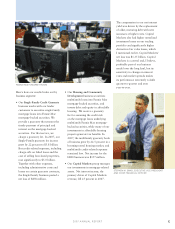 7
7 -
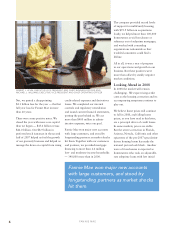 8
8 -
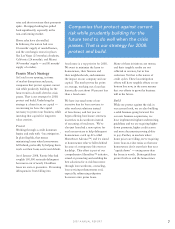 9
9 -
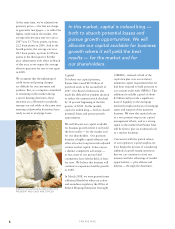 10
10 -
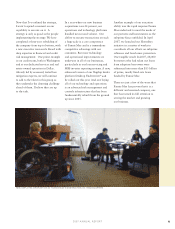 11
11 -
 12
12 -
 13
13 -
 14
14 -
 15
15 -
 16
16 -
 17
17 -
 18
18 -
 19
19 -
 20
20 -
 21
21 -
 22
22 -
 23
23 -
 24
24 -
 25
25 -
 26
26 -
 27
27 -
 28
28 -
 29
29 -
 30
30 -
 31
31 -
 32
32 -
 33
33 -
 34
34 -
 35
35 -
 36
36 -
 37
37 -
 38
38 -
 39
39 -
 40
40 -
 41
41 -
 42
42 -
 43
43 -
 44
44 -
 45
45 -
 46
46 -
 47
47 -
 48
48 -
 49
49 -
 50
50 -
 51
51 -
 52
52 -
 53
53 -
 54
54 -
 55
55 -
 56
56 -
 57
57 -
 58
58 -
 59
59 -
 60
60 -
 61
61 -
 62
62 -
 63
63 -
 64
64 -
 65
65 -
 66
66 -
 67
67 -
 68
68 -
 69
69 -
 70
70 -
 71
71 -
 72
72 -
 73
73 -
 74
74 -
 75
75 -
 76
76 -
 77
77 -
 78
78 -
 79
79 -
 80
80 -
 81
81 -
 82
82 -
 83
83 -
 84
84 -
 85
85 -
 86
86 -
 87
87 -
 88
88 -
 89
89 -
 90
90 -
 91
91 -
 92
92 -
 93
93 -
 94
94 -
 95
95 -
 96
96 -
 97
97 -
 98
98 -
 99
99 -
 100
100 -
 101
101 -
 102
102 -
 103
103 -
 104
104 -
 105
105 -
 106
106 -
 107
107 -
 108
108 -
 109
109 -
 110
110 -
 111
111 -
 112
112 -
 113
113 -
 114
114 -
 115
115 -
 116
116 -
 117
117 -
 118
118 -
 119
119 -
 120
120 -
 121
121 -
 122
122 -
 123
123 -
 124
124 -
 125
125 -
 126
126 -
 127
127 -
 128
128 -
 129
129 -
 130
130 -
 131
131 -
 132
132 -
 133
133 -
 134
134 -
 135
135 -
 136
136 -
 137
137 -
 138
138 -
 139
139 -
 140
140 -
 141
141 -
 142
142 -
 143
143 -
 144
144 -
 145
145 -
 146
146 -
 147
147 -
 148
148 -
 149
149 -
 150
150 -
 151
151 -
 152
152 -
 153
153 -
 154
154 -
 155
155 -
 156
156 -
 157
157 -
 158
158 -
 159
159 -
 160
160 -
 161
161 -
 162
162 -
 163
163 -
 164
164 -
 165
165 -
 166
166 -
 167
167 -
 168
168 -
 169
169 -
 170
170 -
 171
171 -
 172
172 -
 173
173 -
 174
174 -
 175
175 -
 176
176 -
 177
177 -
 178
178 -
 179
179 -
 180
180 -
 181
181 -
 182
182 -
 183
183 -
 184
184 -
 185
185 -
 186
186 -
 187
187 -
 188
188 -
 189
189 -
 190
190 -
 191
191 -
 192
192 -
 193
193 -
 194
194 -
 195
195 -
 196
196 -
 197
197 -
 198
198 -
 199
199 -
 200
200 -
 201
201 -
 202
202 -
 203
203 -
 204
204 -
 205
205 -
 206
206 -
 207
207 -
 208
208 -
 209
209 -
 210
210 -
 211
211 -
 212
212 -
 213
213 -
 214
214 -
 215
215 -
 216
216 -
 217
217 -
 218
218 -
 219
219 -
 220
220 -
 221
221 -
 222
222 -
 223
223 -
 224
224 -
 225
225 -
 226
226 -
 227
227 -
 228
228 -
 229
229 -
 230
230 -
 231
231 -
 232
232 -
 233
233 -
 234
234 -
 235
235 -
 236
236 -
 237
237 -
 238
238 -
 239
239 -
 240
240 -
 241
241 -
 242
242 -
 243
243 -
 244
244 -
 245
245 -
 246
246 -
 247
247 -
 248
248 -
 249
249 -
 250
250 -
 251
251 -
 252
252 -
 253
253 -
 254
254 -
 255
255 -
 256
256 -
 257
257 -
 258
258 -
 259
259 -
 260
260 -
 261
261 -
 262
262 -
 263
263 -
 264
264 -
 265
265 -
 266
266 -
 267
267 -
 268
268 -
 269
269 -
 270
270 -
 271
271 -
 272
272 -
 273
273 -
 274
274 -
 275
275 -
 276
276 -
 277
277 -
 278
278 -
 279
279 -
 280
280 -
 281
281 -
 282
282 -
 283
283 -
 284
284 -
 285
285 -
 286
286 -
 287
287 -
 288
288 -
 289
289 -
 290
290 -
 291
291 -
 292
292
 |
 |

7
2007 ANNUAL REPORT
rates and short resets see their payments
spike. Mortgage lending has pulled
back signifi cantly, especially in the
non-conforming market.
Home sales have also stalled.
In February, the nation had over
10 months’ supply of unsold homes,
and the overhang is worse in places
like Las Vegas (25 months); Anaheim,
California (26 months); and Miami
(49 months’ supply — and 80 months’
supply of condos).
Fannie Mae’s Strategy
As I said in my opening, in times
of market disruptions and panic,
companies that protect against current
risk while prudently building for the
future tend to do well after the crisis
passes. That is our strategy for 2008:
protect and build. Underlying the
strategy is a keen focus on capital —
on ensuring we have the capital
necessary to protect our business, while
investing that capital for long-term
value creation.
Protect
Working through a credit downturn
begins and ends with “loss mitigation.”
In plain English, that means
minimizing losses when homeowners
fall behind, preferably by helping them
work out their loans and avoid default.
As of January 2008, Fannie Mae had
roughly 190,000 seriously delinquent
borrowers out of nearly 18 million
loans we own or guarantee. Preventing
delinquencies from falling into
foreclosure is a top priority for 2008.
We want to minimize the harm to
homeowners, their fi nances and
their neighborhoods, and minimize
the impact on our company and our
capital. The math proves the point:
on average, working out a loan has
historically cost about 90 percent less
than a foreclosure.
We have increased some of our
incentive fees for loan servicers to
offer workout solutions instead
of foreclosure, and last year we
began offering foreclosure attorneys
incentives to do workouts instead
of executing a foreclosure. We’ve
also just launched a new option for
our loan servicers to help delinquent
homeowners catch up. It’s called
HomeSaver Advance™, and it’s aimed
at homeowners who’ve fallen behind
because of a temporary life event or
hardship. This effort is part of our
comprehensive HomeStay™ initiative,
aimed at promoting and enabling the
best solutions for at-risk borrowers
through loan workouts, counseling,
loan servicing enhancements and,
especially, refi nancing subprime
borrowers into prime loans.
Many of these initiatives cost money,
and their tangible results are not
refl ected in revenue, but in loss
reduction. Yet that is the nature of
credit cycles. These loss mitigation
efforts will have tangible effects on our
bottom line now, in the same manner
that our efforts to grow the business
will in the future.
Build
While we protect against the risk in
our current book, we are also building
a solid business going forward. For
our new business acquisitions, we
have implemented tighter underwriting
guidelines and we are requiring higher
down payments, higher credit scores
and more documents proving ability
to pay. Further, in markets where
home prices are falling, we’re requiring
lower loan-to-value ratios so that new
homeowners don’t start their fi rst year
“upside down” — owing more than
the house is worth. Better guidelines
protect both us and the homeowner.
Companies that protect against current
risk while prudently building for the
future tend to do well when the crisis
passes. That is our strategy for 2008:
protect and build.
